-
 Bitcoin
Bitcoin $84,375.5896
-0.36% -
 Ethereum
Ethereum $1,625.0927
0.84% -
 Tether USDt
Tether USDt $0.9996
-0.02% -
 XRP
XRP $2.1341
-0.30% -
 BNB
BNB $587.6479
-0.87% -
 Solana
Solana $132.8724
2.10% -
 USDC
USDC $1.0000
0.00% -
 Dogecoin
Dogecoin $0.1657
0.59% -
 TRON
TRON $0.2562
3.51% -
 Cardano
Cardano $0.6465
0.32% -
 UNUS SED LEO
UNUS SED LEO $9.3839
0.26% -
 Chainlink
Chainlink $12.7424
-1.32% -
 Avalanche
Avalanche $19.9732
-0.33% -
 Stellar
Stellar $0.2414
-0.43% -
 Sui
Sui $2.2681
-3.79% -
 Shiba Inu
Shiba Inu $0.0...01225
-0.62% -
 Hedera
Hedera $0.1688
-1.97% -
 Toncoin
Toncoin $2.8373
-2.58% -
 Bitcoin Cash
Bitcoin Cash $344.9955
2.10% -
 Litecoin
Litecoin $78.2264
0.45% -
 Polkadot
Polkadot $3.7092
1.53% -
 Dai
Dai $0.9999
0.00% -
 Hyperliquid
Hyperliquid $15.7148
-2.98% -
 Pi
Pi $0.7549
2.25% -
 Bitget Token
Bitget Token $4.2928
-2.41% -
 Ethena USDe
Ethena USDe $0.9988
-0.01% -
 Monero
Monero $206.8539
-1.20% -
 Uniswap
Uniswap $5.4409
1.20% -
 OKB
OKB $53.1120
-2.58% -
 Pepe
Pepe $0.0...07433
1.92%
What is Mining Rig?
A mining rig uses GPUs, a stable motherboard, high-wattage PSU, and cooling systems to efficiently mine cryptocurrencies by solving complex math problems.
Apr 07, 2025 at 11:08 pm
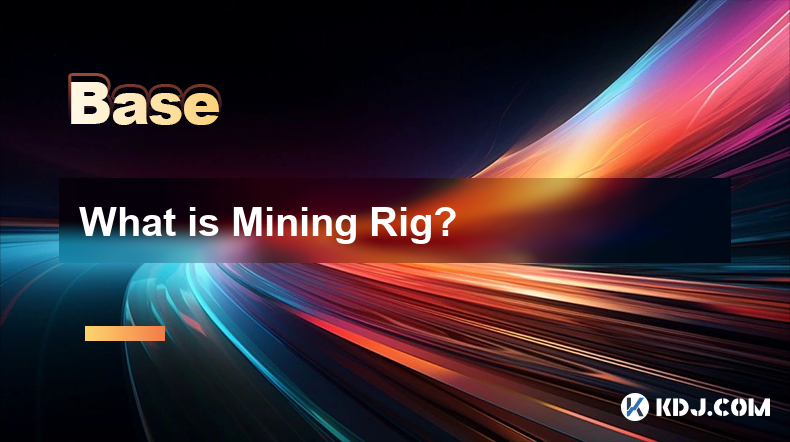
A mining rig is a specialized computer system designed specifically for the purpose of mining cryptocurrencies. Mining, in the context of cryptocurrencies, refers to the process of solving complex mathematical problems to validate transactions and add them to the blockchain. This process requires significant computational power, and a mining rig is built to provide that power efficiently.
Components of a Mining Rig
A mining rig consists of several key components that work together to maximize its mining efficiency.
Graphics Processing Units (GPUs): These are the heart of most mining rigs. GPUs are highly efficient at performing the parallel processing required for mining. Popular choices include models from NVIDIA and AMD.
Motherboard: The motherboard must support multiple GPUs and have enough PCIe slots to accommodate them. It should also be stable under heavy load.
Power Supply Unit (PSU): Mining rigs consume a lot of power, so a high-wattage PSU is essential. It should be capable of delivering stable power to all components without overheating.
Cooling System: Mining generates a lot of heat, so effective cooling is crucial. This can include fans, liquid cooling systems, or a combination of both.
CPU and RAM: While the CPU and RAM are not as critical as the GPU for mining, they are still necessary for the overall operation of the system. A basic CPU and sufficient RAM will suffice.
Mining Software: This software connects the rig to the blockchain network and manages the mining process. Popular options include CGMiner, EasyMiner, and NiceHash.
Setting Up a Mining Rig
Setting up a mining rig involves several steps to ensure it operates efficiently and effectively.
Choose the Right Components: Start by selecting the appropriate GPUs, motherboard, PSU, and cooling system based on your budget and the cryptocurrency you intend to mine.
Assemble the Rig: Begin by installing the motherboard into the case or frame. Connect the PSU to the motherboard and GPUs. Install the GPUs into the PCIe slots on the motherboard. Ensure all connections are secure.
Install the Operating System: Most mining rigs run on a lightweight version of Linux or Windows. Install the OS on an SSD for faster boot times and performance.
Install Mining Software: Download and install the mining software of your choice. Configure the software to connect to the desired cryptocurrency network and mining pool.
Configure the Rig: Adjust the settings in the mining software to optimize performance. This may include setting the appropriate mining algorithm, adjusting the GPU clock speeds, and configuring the cooling system.
Start Mining: Once everything is set up and configured, start the mining process. Monitor the rig's performance and temperature to ensure it is operating within safe limits.
Types of Mining Rigs
There are several types of mining rigs, each suited to different needs and budgets.
GPU Mining Rigs: These are the most common type of mining rig. They use multiple GPUs to mine cryptocurrencies and are versatile enough to mine a variety of coins.
ASIC Mining Rigs: Application-Specific Integrated Circuit (ASIC) rigs are designed to mine a specific cryptocurrency. They are more efficient than GPU rigs for the targeted coin but less versatile.
CPU Mining Rigs: These rigs use the CPU to mine cryptocurrencies. They are less efficient than GPU or ASIC rigs and are generally used for mining less popular coins.
Cloud Mining Rigs: Instead of owning physical hardware, cloud mining allows users to rent computing power from remote data centers. This can be a more accessible option for those without the technical expertise or resources to build their own rig.
Efficiency and Profitability
The efficiency and profitability of a mining rig depend on several factors.
Hash Rate: The hash rate is a measure of the rig's processing power. A higher hash rate means the rig can solve more problems and mine more coins.
Power Consumption: The amount of electricity the rig consumes is a significant factor in its profitability. More efficient rigs consume less power for the same amount of work.
Cryptocurrency Price: The price of the cryptocurrency being mined directly affects profitability. Higher prices mean more revenue for the same amount of mining.
Mining Difficulty: The difficulty of the mining algorithm can change over time. Higher difficulty means more computational power is required to mine the same amount of coins.
Pool Fees: If you join a mining pool, the fees charged by the pool will affect your net earnings.
Maintenance and Upgrades
Maintaining a mining rig is crucial to ensure it continues to operate efficiently.
Regular Cleaning: Dust can accumulate on the components and cause overheating. Regularly clean the rig to keep it running smoothly.
Monitor Temperatures: Use software to monitor the temperatures of the GPUs and other components. High temperatures can lead to reduced performance and hardware failure.
Update Software: Keep the mining software and operating system up to date to benefit from the latest features and security patches.
Upgrade Components: As technology advances, upgrading components like GPUs can increase the rig's efficiency and profitability. Consider upgrading when the cost of new components is justified by the potential increase in earnings.
Frequently Asked Questions
Q: Can I mine multiple cryptocurrencies with the same mining rig?
A: Yes, most GPU mining rigs can be configured to mine different cryptocurrencies. However, you may need to switch between mining software and adjust settings to optimize for each coin.
Q: How long does it take to set up a mining rig?
A: The time it takes to set up a mining rig can vary depending on your experience and the complexity of the rig. On average, it can take anywhere from a few hours to a full day to assemble and configure a rig.
Q: Is it better to mine alone or join a mining pool?
A: Joining a mining pool can increase your chances of earning a consistent income, as the pool's combined hash rate is more likely to solve blocks. However, pool fees will reduce your net earnings. Mining alone can be more profitable if you have a high hash rate, but it can also be less consistent.
Q: How do I know if my mining rig is profitable?
A: To determine the profitability of your mining rig, you need to calculate your earnings based on the current hash rate, cryptocurrency price, and mining difficulty. Subtract the costs of electricity and any pool fees to find your net profit. There are online calculators available that can help with this calculation.
Disclaimer:info@kdj.com
The information provided is not trading advice. kdj.com does not assume any responsibility for any investments made based on the information provided in this article. Cryptocurrencies are highly volatile and it is highly recommended that you invest with caution after thorough research!
If you believe that the content used on this website infringes your copyright, please contact us immediately (info@kdj.com) and we will delete it promptly.
- MSTY: Payouts Continue To Decline As Bitcoin Cycle Shifts
- 2025-04-14 13:30:13
- Introducing Stellar Lumens (XLM): The Future of Global Money Transfers
- 2025-04-14 13:30:13
- MANTRA RWA token OM crashes 90%, investors allege insider dumping
- 2025-04-14 13:25:13
- 2025 Has Not Been the Year Most Cryptocurrency Market Participants Anticipated
- 2025-04-14 13:25:13
- Welcome New Users and Show Your Appreciation to Existing Users with Up to 30,000 USDT in Token Voucher Rewards
- 2025-04-14 13:20:13
- Cardano founder Charles Hoskinson has waxed bullish about Bitcoin despite tariff-inspired market turbulence.
- 2025-04-14 13:20:13
Related knowledge

What is Delayed Encryption technology?
Apr 11,2025 at 10:42pm
What is Delayed Encryption Technology? In the world of cryptocurrencies, security is paramount. One of the innovative solutions to enhance the security of digital transactions is Delayed Encryption Technology. This technology introduces a layer of security by encrypting data with a time delay, ensuring that the information remains secure until a specifi...
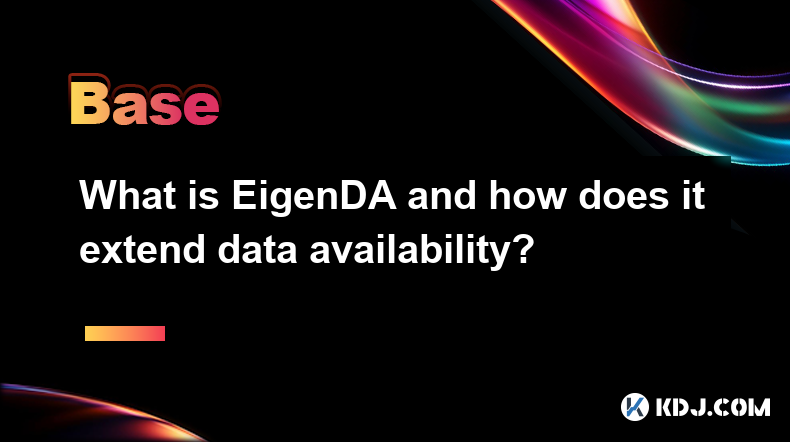
What is EigenDA and how does it extend data availability?
Apr 11,2025 at 05:28pm
EigenDA is a groundbreaking solution within the cryptocurrency ecosystem designed to enhance data availability across blockchain networks. Developed by EigenLayer, EigenDA aims to address the critical issue of data availability, ensuring that all participants in a blockchain network can access the necessary data to verify transactions and maintain the i...
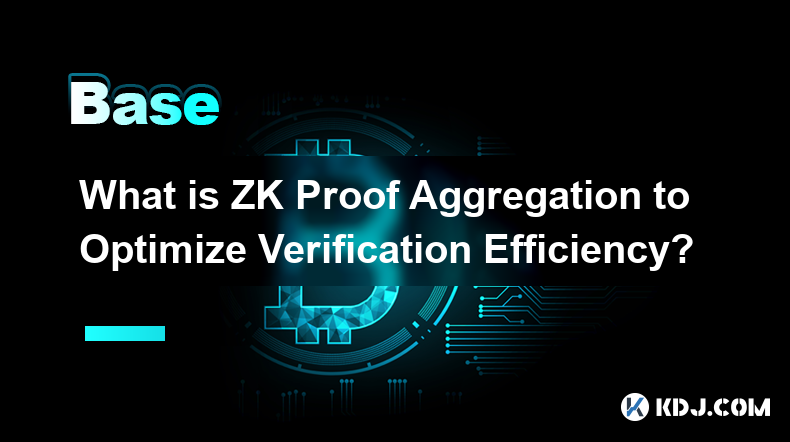
What is ZK Proof Aggregation to Optimize Verification Efficiency?
Apr 11,2025 at 05:42pm
ZK Proof Aggregation is a technique used in the field of zero-knowledge proofs (ZKPs) to enhance the efficiency of verifying multiple proofs. In the context of cryptocurrencies, where scalability and efficiency are paramount, ZK Proof Aggregation plays a crucial role in optimizing the verification process. This method allows multiple proofs to be combin...
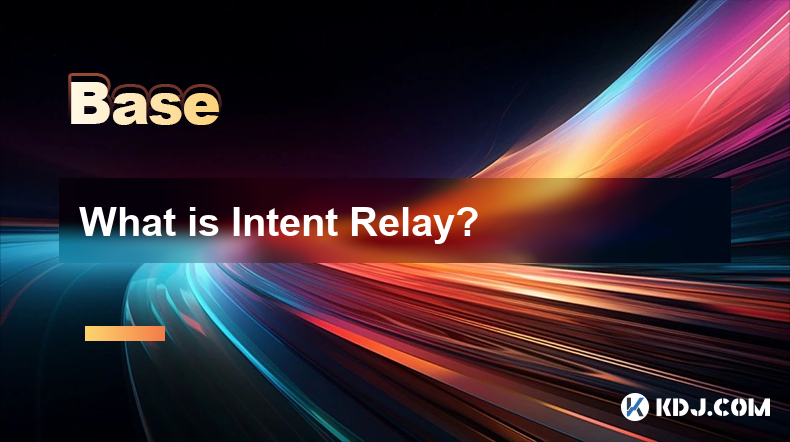
What is Intent Relay?
Apr 14,2025 at 06:43am
What is Intent Relay? Intent Relay is a concept within the cryptocurrency and blockchain ecosystem that focuses on improving the efficiency and user experience of decentralized applications (dApps). At its core, Intent Relay involves the communication of a user's intent to perform a specific action within a blockchain network, without the user needing t...

What is DePIN (Decentralized Physical Infrastructure)?
Apr 12,2025 at 01:42am
What is DePIN (Decentralized Physical Infrastructure)? DePIN, or Decentralized Physical Infrastructure, represents a groundbreaking approach to building and managing physical infrastructure using decentralized technologies. At its core, DePIN leverages blockchain and other decentralized systems to create, operate, and maintain physical assets in a way t...
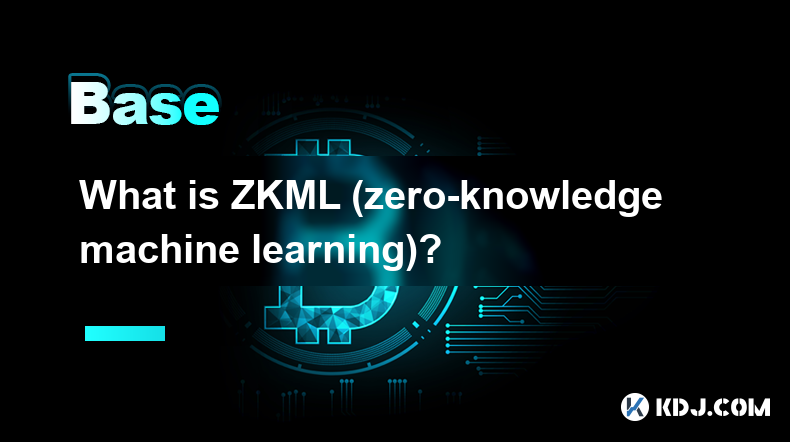
What is ZKML (zero-knowledge machine learning)?
Apr 13,2025 at 07:50am
What is ZKML (Zero-Knowledge Machine Learning)? Zero-Knowledge Machine Learning, commonly abbreviated as ZKML, represents an innovative intersection between zero-knowledge proofs and machine learning technologies within the cryptocurrency ecosystem. At its core, ZKML enables the execution of machine learning models in a way that maintains privacy and se...

What is Delayed Encryption technology?
Apr 11,2025 at 10:42pm
What is Delayed Encryption Technology? In the world of cryptocurrencies, security is paramount. One of the innovative solutions to enhance the security of digital transactions is Delayed Encryption Technology. This technology introduces a layer of security by encrypting data with a time delay, ensuring that the information remains secure until a specifi...

What is EigenDA and how does it extend data availability?
Apr 11,2025 at 05:28pm
EigenDA is a groundbreaking solution within the cryptocurrency ecosystem designed to enhance data availability across blockchain networks. Developed by EigenLayer, EigenDA aims to address the critical issue of data availability, ensuring that all participants in a blockchain network can access the necessary data to verify transactions and maintain the i...

What is ZK Proof Aggregation to Optimize Verification Efficiency?
Apr 11,2025 at 05:42pm
ZK Proof Aggregation is a technique used in the field of zero-knowledge proofs (ZKPs) to enhance the efficiency of verifying multiple proofs. In the context of cryptocurrencies, where scalability and efficiency are paramount, ZK Proof Aggregation plays a crucial role in optimizing the verification process. This method allows multiple proofs to be combin...

What is Intent Relay?
Apr 14,2025 at 06:43am
What is Intent Relay? Intent Relay is a concept within the cryptocurrency and blockchain ecosystem that focuses on improving the efficiency and user experience of decentralized applications (dApps). At its core, Intent Relay involves the communication of a user's intent to perform a specific action within a blockchain network, without the user needing t...

What is DePIN (Decentralized Physical Infrastructure)?
Apr 12,2025 at 01:42am
What is DePIN (Decentralized Physical Infrastructure)? DePIN, or Decentralized Physical Infrastructure, represents a groundbreaking approach to building and managing physical infrastructure using decentralized technologies. At its core, DePIN leverages blockchain and other decentralized systems to create, operate, and maintain physical assets in a way t...

What is ZKML (zero-knowledge machine learning)?
Apr 13,2025 at 07:50am
What is ZKML (Zero-Knowledge Machine Learning)? Zero-Knowledge Machine Learning, commonly abbreviated as ZKML, represents an innovative intersection between zero-knowledge proofs and machine learning technologies within the cryptocurrency ecosystem. At its core, ZKML enables the execution of machine learning models in a way that maintains privacy and se...
See all articles






















































































